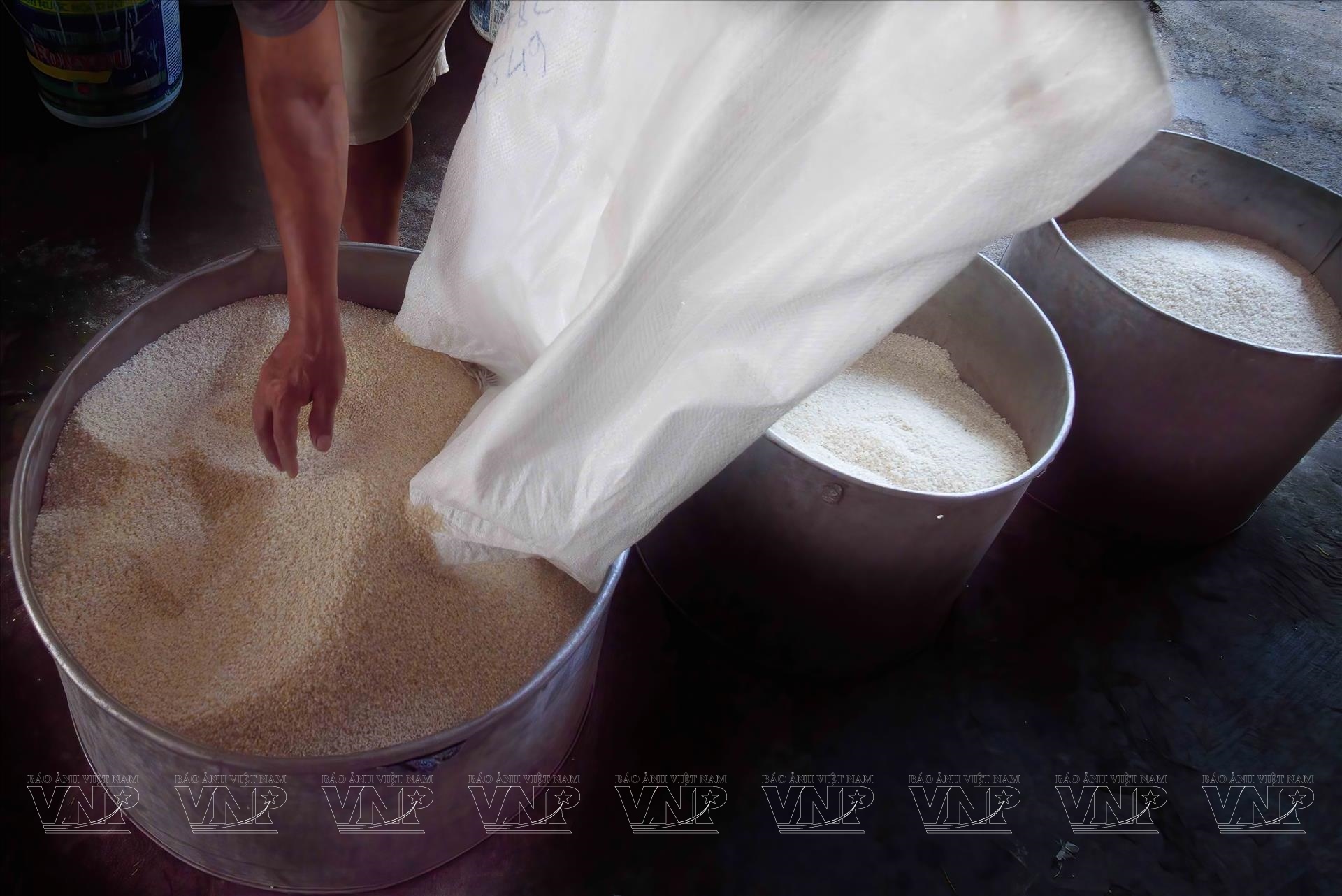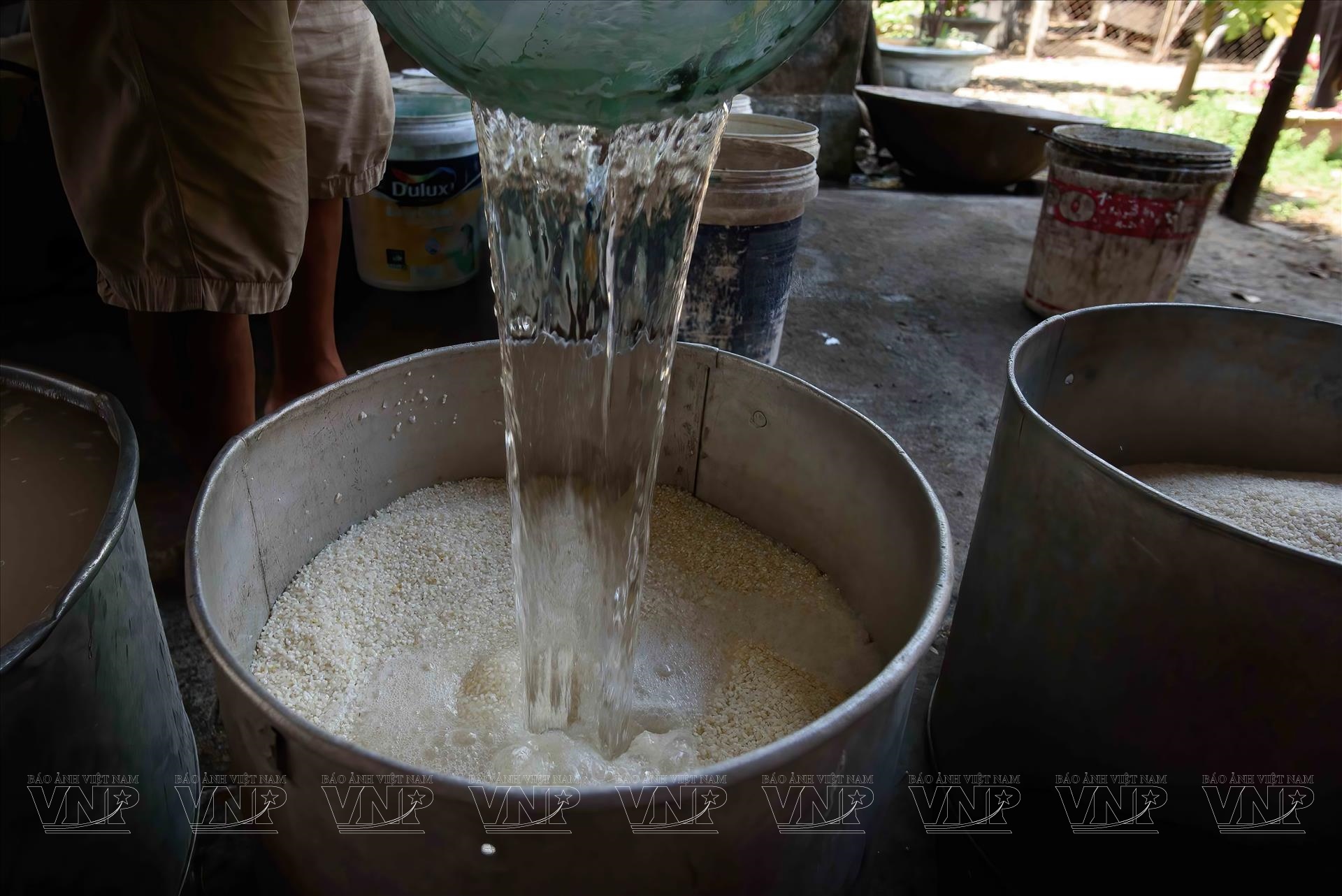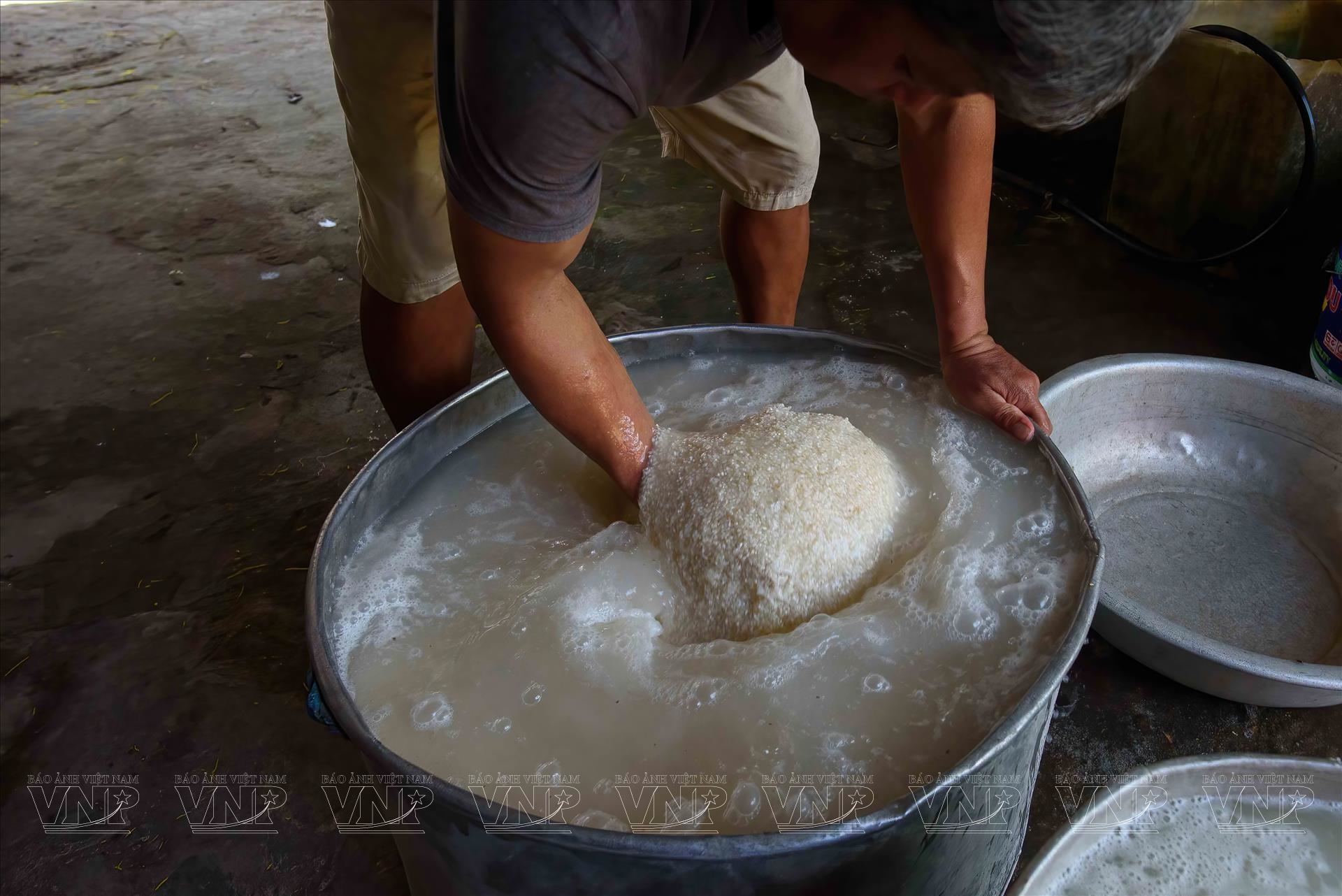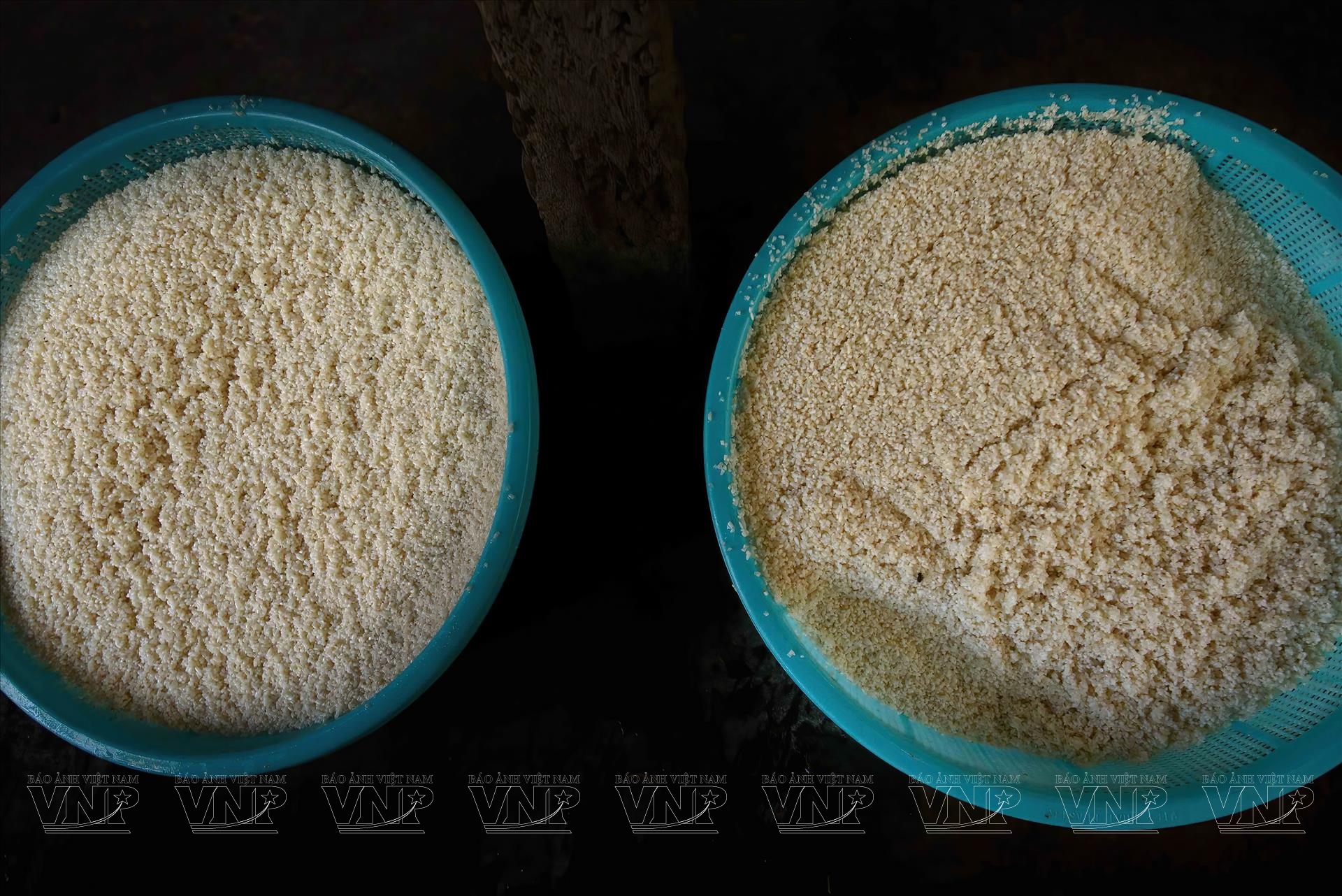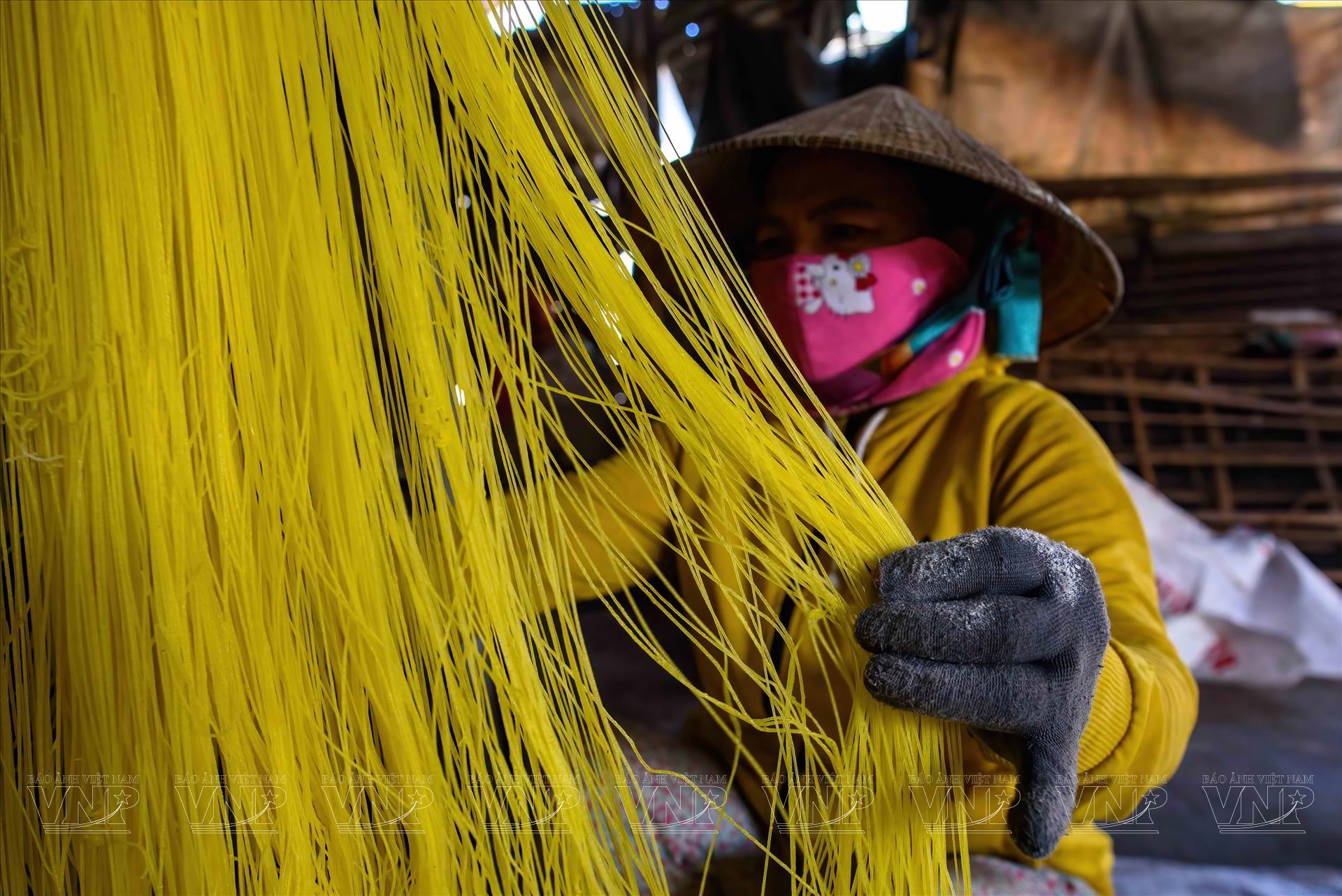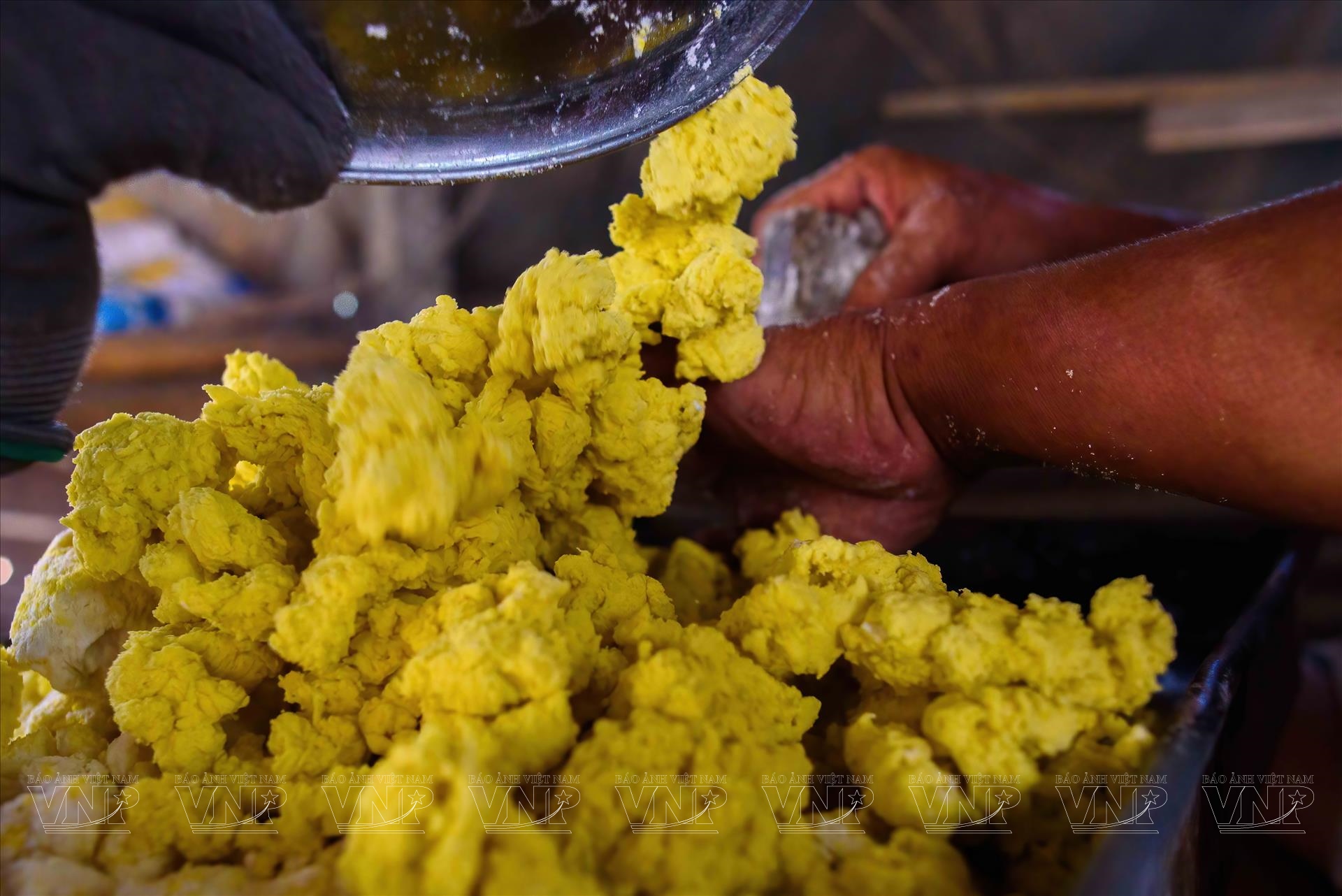Dry Noodle Making in Da Nang
Da Nang is home to many popular traditional crafts nationwide, such as Ngu Hanh Son stone carving, Cam Ne mat weaving, Nam O fish sauce, Tuy Loan rice paper, Ba Lieu sesame seed crackers and the dry noodle making craft in Hoa Vang.
Dry noodle making is not a high-income profession, but the product is popular with locals as a key ingredient in many traditional Quang Nam dishes. As a result, the people of Hoa Vang have preserved this ancient craft.
While northerners prefer vermicelli, southerners like fresh noodles, the people of Quang Nam prefer dry noodles for their dishes. In daily life, especially during ceremonies and parties, Quang Nam people often use dry noodles to make stir-fries and soups to entertain guests.
These simple and humble dry noodles, when cooked with ingredients like meat, fish, vegetables or fruit turn out to be surprisingly delicious and refreshing. It is no wonder that despite the presence of many types of noodles, with many varieties increasingly available on the market, Da Nang dry noodles still have a special place in the menus of skilled Quang Nam housewives. We visited Duong Son Village (Hoa Tien Commune, Hoa Vang District, Da Nang) to find the long-standing and most well known dry noodle kiln. It is the Duong Tra kiln of Nguyen Hong Duong and Pham Thi Tra.
When we visited, they were busy completing the final stages of a batch of goods to prepare for delivery to customers. Tra said that her noodle kiln has been around for over 30 years now and is one of the oldest in Da Nang - Quang Nam.
"More than 30 years ago, there were only one or two dry noodle kilns in Da Nang - Quang Nam. Now Da Nang has developed but there are not more than five establishments. The reason why not many people do this job is because it is quite hard and they have to be meticulous in every step, but the income is not much,” Tra said.
To get a dry noodle package to consumers, it is a long process of selecting rice, soaking rice, grinding rice, pressing noodles, drying noodles and packaging. Tra said that every day, around 1pm, she has to go to wash the rice, then let it drain for about two hours before grinding it into flour, then let the flour soak for another two hours before pressing it into noodles. After pressing, the noodles are left overnight to drain and dry naturally, then the next morning they are taken out to dry in the sun until they are completely dry.
The noodles are made almost entirely by hand, only the noodle pressing stage uses a machine to make the noodles evenly long and also to reduce labor. In particular, Hoa Vang dry noodles are made entirely from natural ingredients, without using preservatives, so the noodles are both safe and hygienic and can be stored for a long time.
Today, not many people in Hoa Vang follow the dry noodle making craft anymore, but with their love and passion for the profession, people like Duong and Tra have preserved a traditional craft of their hometown in Da Nang. As a result, Hoa Vang dry noodle products are still trusted and chosen by consumers in Da Nang, Quang Nam and a bit further away, Quang Ngai, for their grocery shopping baskets to enrich their daily meals and every time the family has a party to entertain guests from near and far./.
- By Nguyen Trinh Translated by Hong Hanh

